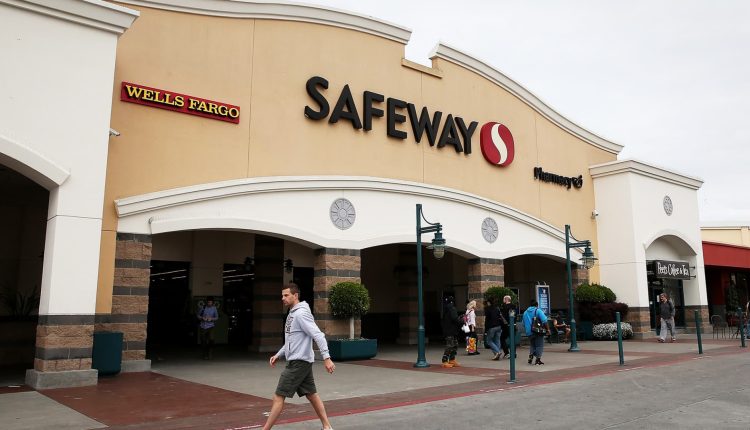Customers at a Safeway store in San Francisco.
Getty Images
American banks have been shuttering branches located within supermarket chains at a rate seven times faster than other locations amid the industry’s profit squeeze and customers’ migration to digital channels.
Banks closed 10.7% of their in-store branches in the year ending June 30, according to Federal Deposit Insurance Corporation data. The closure rate for other branches was 1.4% during that period.
Most branches within grocery stores are operated by regional banks, which have been under pressure since the March collapse of Silicon Valley Bank. PNC, Citizens Financial and U.S. Bank shut the most in-store locations during the 12-month period at chains including Safeway and Stop & Shop. Among retailers, Walmart houses the most bank branches with 1,179, according to an S&P Global report released this week.
While the financial industry has been closing branches for years, the pace accelerated sharply in 2021 after the Covid-19 pandemic turbocharged the adoption of mobile and online banking. That year, banks closed nearly 18% of their in-store branches and 3.1% of other locations, S&P Global said.
“In-store branches have fallen out of favor at many banks,” said Nathan Stovall, head of financial institutions research at S&P Global Market Intelligence. “We’ve seen banks look to shrink their branch networks, with a focus on cutting less-profitable branches that generate less customer traffic and fewer loans and high net worth accounts.”
Banks began building branches inside supermarkets in the 1990s because the scaled-down locations were far cheaper to set up than regular locations. But the industry now views branches as a place to entice customers with wealth management accounts, credit cards and loans rather than just a place to withdraw money, and that favors full-size branches.
The pace of closures has slowed since the 2021 peak but is still at an elevated level compared to before the pandemic. For instance, in 2019, banks shut 4.2% of in-store locations and 1.7% of other locations.
The moves come as the industry is adjusting to higher funding costs as customers have moved balances into higher-yielding options such as money market funds. U.S. banks registered a 15% decline in deposits from in-store branches, while deposits at other branches fell 4.7% in the year ending June 30, according to the FDIC.
Don’t miss these CNBC PRO stories:
Read the full article here

